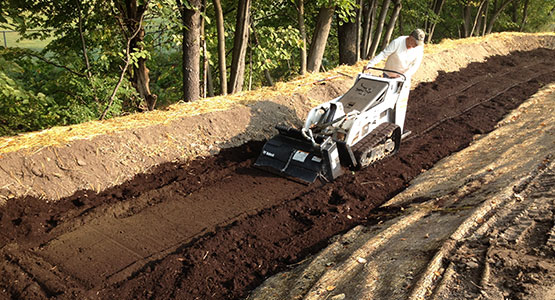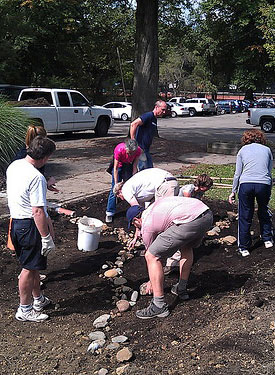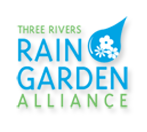Before you toil, know your soil.
Most soils are categorized as sandy, silty, or clayey. Sandy soil—it feels gritty and coarse—drains the fastest, clayey soil—sticky and clumpy—the slowest. In Western Pennsylvania, most of the soils have high clay content. Rain gardens can still work in clayey soil, but they will need to be larger, and the soil should be amended.

Here are a couple of simple tests you can do to find out which kind you have.
- Dig a hole 18” deep and fill with water.
- Allow water to drain completely from the hole.
- Refill the hole with water a second time.
- Using the following formula to record the results…
The Infiltration rate (i) = the rate fall of the water in the hole/time = inches/hour
Using a ruler measure the rate at which the water drains in inches.
Divide this number by the amount of time (for example 15 minutes = 0.25 hours)
So, if your water level drops by 3 inches in the course of one hour, i = 3/1 = 3 inches per hour.
Compare your result to the information below.
If i ≥ 0.5 inches/hour then your location will support a straightforward rain garden design.
If i ≤ 0.5 inches/hour then a mechanical underdrain and/or substantial soil amendment are needed, or, choose another location for your garden.
Note: If the water takes more than 48 hours to drain from your 18” hole, you have very heavy clay. We strongly suggest looking for an alternative location for a rain garden.- Take a handful of dirt and add a few drops of water.
- After kneading the soil in your fingers, roll it into a ball.
- Crush it between your forefinger and thumb, squeezing it upward into a ribbon.
- Lay the ribbon over your forefinger until it breaks from its own weight.
- If the ribbon is more than an inch long before it breaks, and it feels more smooth than gritty, keep looking.

If all the possible locations for your rain garden feature clayey soil, you can create your own suitable soil with a trip to your local garden store or landscape supplier. A good mix for a rain garden is 30% sand, 30–40% loamy topsoil and 30% organic material from yard waste compost. This mixture must be tilled into the existing soil to ensure proper drainage conditions.
